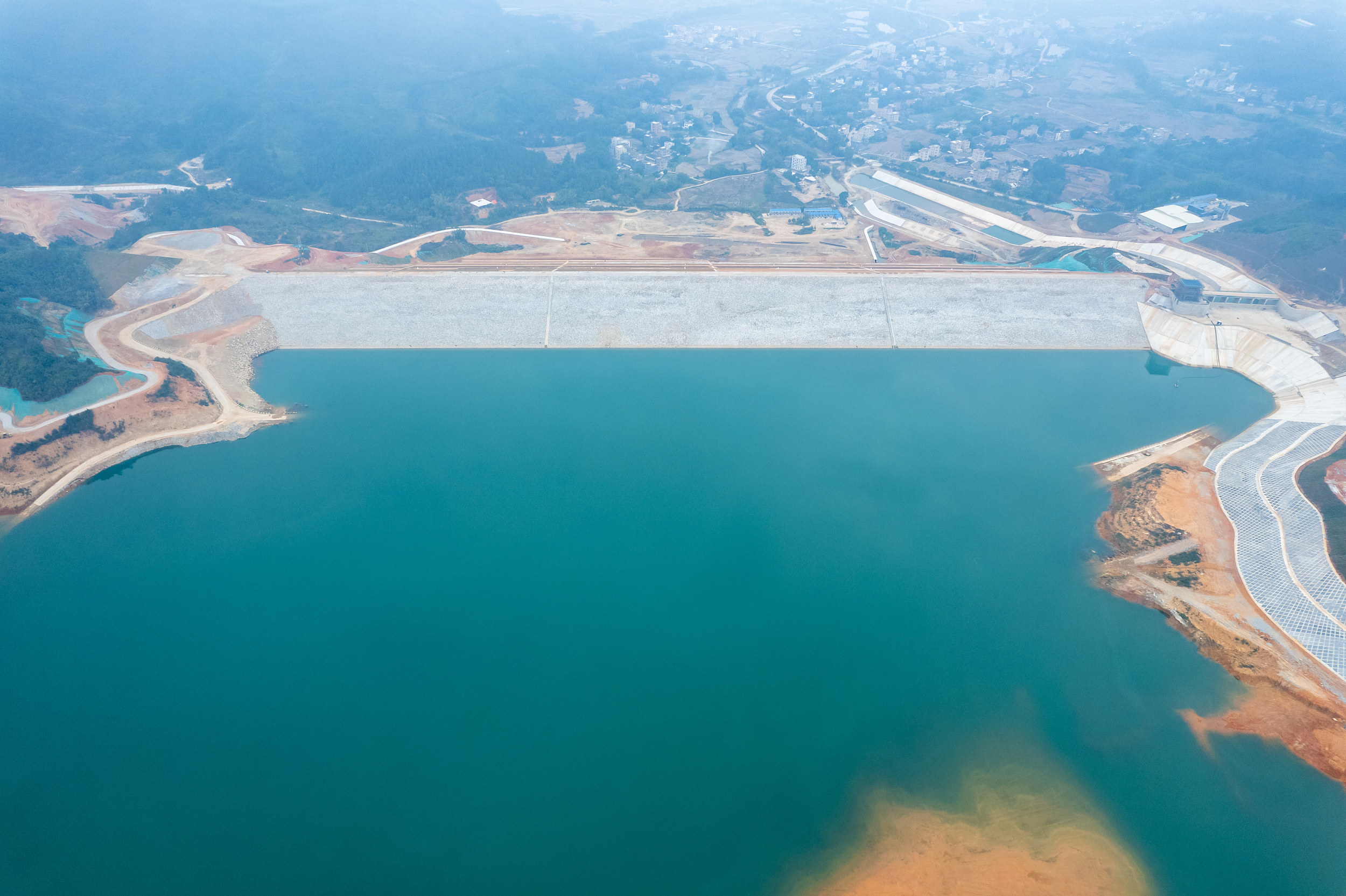By?LI?Linxu
With a total installed capacity of 2.4 million kilowatts, two new power stations bring the total installed capacity of pumped storage power stations (PSPS) in Guangdong-Hong Kong-Macao Greater Bay Area (GBA) to nearly 10 million kilowatts, making GBA a world-class bay area power grid with the largest installed pumped storage, the strongest grid adjustment capacity, and the highest proportion of clean energy consumption, according to China Southern Power Grid (CSPG).
Pumped storage hydropower acts similarly to a giant battery. It works by pumping water from the lower reservoir to the upper reservoir during the off-peak period at night, and releasing the water to generate electricity in the daytime to meet the demand for power consumption.

A?pumped storage power station?(PHOTO:VCG)
The two PSPS, located in Meizhou and Yangjiang in Guangdong province and constructed by CSPG, were put into operation on May 28.
The peak demand of GBA during the daytime is about 100 million kilowatts, while the lowest nighttime off-peak demand is about 30 million kilowatts, indicating a great peak-valley difference of power demand, said Li Hua, an official from CSPG, adding that the pumped storage stations will significantly enhance the power grid adjustment capacity of GBA and thus more clean electricity such as wind power and hydropower can be absorbed at night.
The two stations are expected to optimize the peak regulation power of 3.4 billion kWh per year, equivalent to a reduction of carbon dioxide emissions of 2.8 million tons.
The gross investment in the two stations reached about 15 billion RMB, said Liu Guogang, an official from CSPG, adding that the construction and operation of these two stations not only brings substantial power adjustment benefits, but also drives 30 billion RMB investment in the upstream and downstream industrial chain.
A number of key technologies in the design and construction of the stations has been solved, including a world-class reinforced concrete lining for hydropower tunnels.
The trio will conduct a series of experiments in fields such as life science, fluid physics, combustion science and materials science. Notably, this is the first time that fruit flies have been taken on a Chinese space mission as experimental subjects. What made scientists choose fruit flies? What experiment will they undergo?
